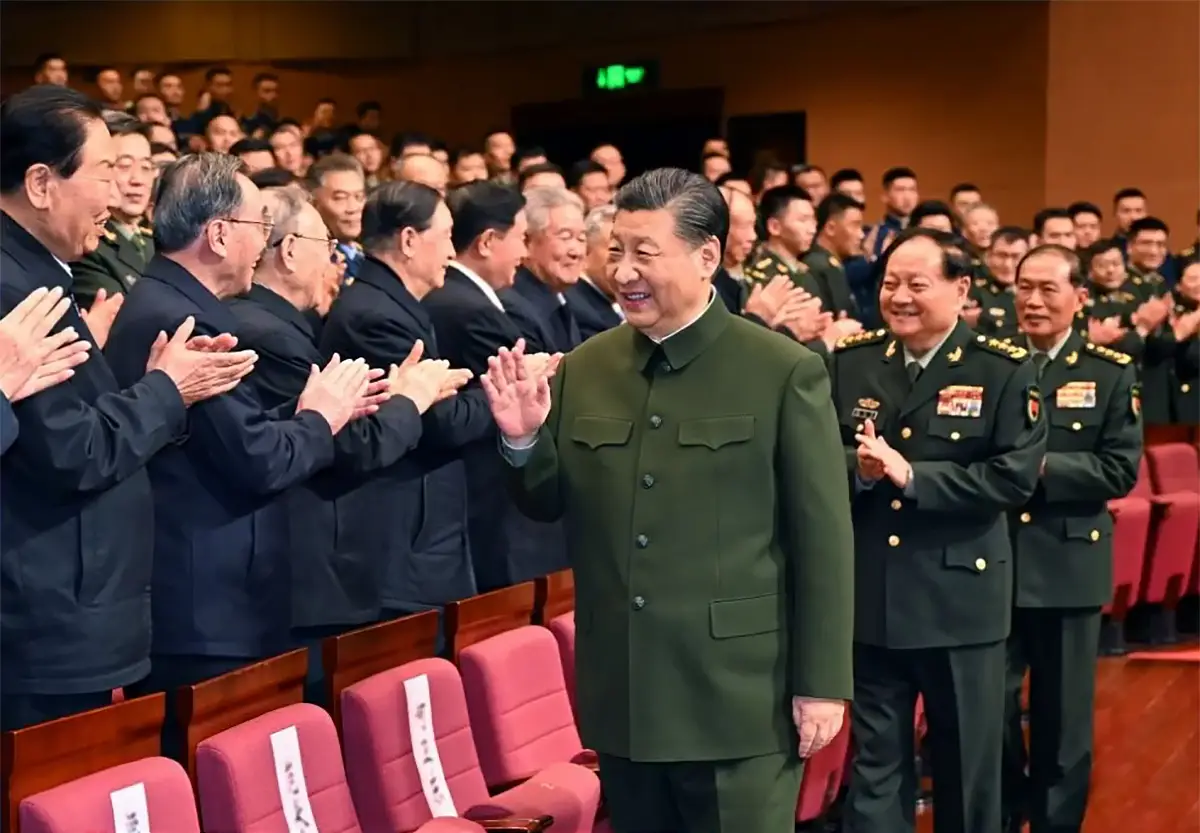The world is evolving rapidly. A reversion to great power politics and mercantilist trade wars roils international politics. As traditional resource pools dwindle, oil, gas and mining companies and fishing fleets are pushing into new regions and seeking untapped resource. Curiously, all this human activity is most consequential where humans are virtually absent: at the Earth’s poles. Twenty years ago the Arctic, covered in ice pack, was untouched aside from a few hardy explorers and the occasional submarine. Now the High North buzzes with new maritime transport routes, tourism, and fishing. The region has become another square in the game board of great power competition.
Today, a similar process is unfolding in Antarctica and the Southern Ocean that surrounds it. For decades the continent was largely ignored and left to scientists by treaty, but it is now increasingly under the eye of China, a rising power keen to establish its presence and score influence within the regional governing system.
China’s rising presence in Antarctica and the Antarctic Treaty System
Since 1961, the Treaty of Antarctica has limited human activities on Antarctica to those for peaceful purposes and scientific enterprise. It prohibits any claims to sovereignty. The number of signatory nations has risen from the original 12 to 54, 29 of whom have consultative status, each of those 29 nations has veto power within the consensus-based decision-making process. The system worked quietly for decades, but is increasingly under strain as new members — especially China — seek new flexibility in their approach to a continent and ocean rich in untapped resources.
Several incidents over the last two years have raised suspicions. China built its fifth research base on Antarctica without completing the required environmental impact assessment. China and Russia have cooperated to delay the creation of new maritime protected areas designed to stop the poaching of krill. And China has proposed the creation of a “Chinese management district” near the eastern coast, an area of approximately 20,000 square kilometer where the presence of foreigners would be restricted. The proposal has been rejected, but there is no process for adjudication of treaty violations and no clear means of enforcing compliance.
These attempts to bend the Antarctic Treaty System away from transparency and commonly recognized rules for information-exchange and environmental protection are alarming. While these bases are officially for scientific and safety purposes, they could have military applications as well, including satellite tracking and communications. When elements of the treaty come up for revision in the 2040s, these facilities could be the basis for claims of mineral and other resource rights — and even territorial sovereignty. At the very least, it is clear that China seeks to be a leading player in Antarctic governance, and it is working to shape the Antarctica Treaty system to suit its national interests
Disputed lands and waters
Over the next thirty years, virtually the entire continent of Antarctica, as well as its surrounding waters, will be up for grabs. Seven nations have historic claims over Antarctic territory, some of them overlapping. The most problematic case is the conflicting claims of the United Kingdom, Chile and Argentina. For decades, disputed British claims to the Falkland, South Georgia and South Sandwich Islands, off the southern tip of Argentina, have created regulatory problems, fed nationalist ire and led to war. As competition over scarce resources sharpens in the future, these disputes over several hundreds of thousands of square miles of fishing rights and seabed claims will demand resolution.
Faced with similar disputes over islands and maritime territorial rights in the South China Seas, China responded by unilaterally building islands, redrawing its boundaries and challenging the international community to stop it. If this attitude carries over to Antarctic disputes, Beijing could find local partners — Argentina in particular — quite willing to cooperate in building presence and capabilities that make territorial claims for both parties a fait accompli.
U.S. Strategy Going Forward
The United States has not yet reacted to these alarming developments. The 2017 National Security Strategy and 2018 National Defense Strategy omit Antarctica altogether. Obviously, Antarctica is far from U.S. shores, but in an era of emerging rivals, Washington cannot afford complacency.
So what should the United States do? First, it should work more closely with its allies who have important national interests in a stable Antarctica. Australia is a close military and intelligence partner with significant interests in Antarctica and the wider Southern Ocean. Indeed, Australia historically claimed 42 percent of Antarctic territory.
Another key partner is Chile, South America’s wealthiest and most militarily capable nation and a reliable democratic partner on the world stage. Chile is seeking partnerships to improve safe access to Antarctic research bases and to protect the region from the rapid rise of commercial tourism and illegal fishing. China has expressed interest in laying submarine cables from Chile to Antarctica and improving Chilean infrastructure in the far south, with clear intent to improve its access and services in the region. The U.S. should engage Chile’s scientific, business and government communities and promote bilateral investment and partnership in Chile’s Antarctic endeavors. Washington should also ensure that whatever investments and agreements China may make in the far south do not compromise U.S. strategic interests. U.S. aircraft carriers routinely pass through the Strait of Magellan when transiting between the Pacific and Atlantic Oceans. Although Argentina and the U.S. are not currently as close as they’ve been in the past, the strategic relevance of that relationship — especially given Argentina’s attractiveness as a major partner for Beijing — should not be overlooked.
As Washington continues to expand on the second pillar of the National Defense Strategy — building alliances and strategic partnerships — Australia, Chile and other U.S. allies such as the U.K. will be important enablers of a stable Antarctic future. Washington has come to grasp the gravity of the unfolding situation in the Arctic. Future iterations of the National Security Strategy, National Defense Strategy and the Unified Command Plan should acknowledge the strategic importance of the other end of the globe and the risks posed by geostrategic competition there. Through more emphasis on its national interests, as well as working with its allies, the U.S. will demonstrate a more holistic approach to polar security in an era of great power competition.
Nilanthi Samaranayake directs the Strategy and Policy Analysis program. She has led several studies at CNA on Indian Ocean and South Asia security.
Ralph Espach is a senior research scientist at CNA's Strategy and Policy Analysis program. He is an expert on inter-American security relations, especially regarding Central America and Brazil, the security implications of climate change, and security cooperation.


